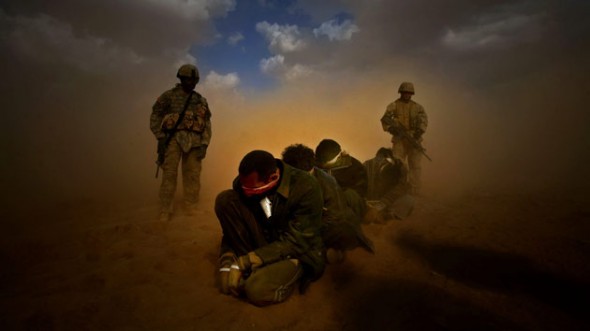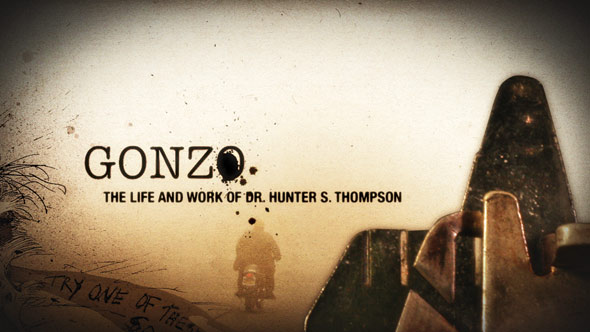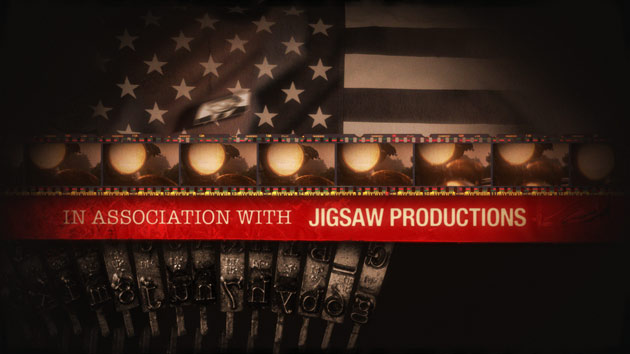Making Must-See Documentaries in a Politically Charged Climate
It was Sundance that turned Alex Gibney into a household name—in the homes of documentary buffs, at least—after 2005 festival favorite Enron: The Smartest Guys in the Room became a must-see doc. He returned in 2007 as executive producer of the Iraq War documentary No End in Sight, and, in 2008, he will be back on the Sundance beat with his new film, Gonzo: The Life and Work of Dr. Hunter S. Thompson, a narrative that combines archival materials, new interviews and staged re-enactments (Gibney calls them "movies" within his own movie) to chronicle the life and times of journalist Hunter S. Thompson.
"We got complete cooperation from the Thompson estate," Gibney says of his team at New York-based Jigsaw Productions. "We found extraordinary materials — audiotapes, 16mm films. We were given access to unpublished manuscripts and photographs. It was a motherlode of material. But, of course, you can't be satisfied with that. You have to cast your net pretty widely." Among the extra material Gibney's global hunt for Hunter memorabilia turned up was Thompson's mid-1960s guest appearance on game show To Tell the Truth, coinciding with the publication of his book Hell's Angels. "It's fantastic because you see Hunter as a tall, gangly but very shy, unassuming character, not the full-blown extrovert he became later. It's fascinating." Gibney also secured a lineup of interviews with important figures in Thompson's life, including the likes of Jann Wenner, Tom Wolfe, Jimmy Carter, George McGovern, Jimmy Buffet, and even Pat Buchanan.
The idea of making a movie about Thompson—who essentially invented the style of reportage known as "gonzo journalism"—was proposed by Vanity Fair editor Graydon Carter and HDNet Films' Jason Kliot and Joana Vicente. "I thought it would be a good idea," Gibney recalls. "I had just read an op-ed piece by Frank Rich where he took on a combination of Hunter S. Thompson and Jeff Gannon—the sometime male prostitute who posed as a newsman—and then Dan Rather. [Rich] was saying that at a time like this, when people are masquerading as newsmen in White House briefings and taken seriously by the administration, we need a different kind of journalistic attack. Someone like Hunter, who had just committed suicide. And that seemed like a rationale for looking back at Hunter, but also looking at what he might offer to us today."
Multi-Camera Shoot
The production's main camera was a Sony CineAlta F900. A Panasonic VariCam recorded the final shot and an HVX200 was used as a B camera, or in situations where the smaller camera's mobility was beneficial. One of Gonzo's mini-movie "flights of fancy" was shot in HD, but another was captured to Super 8. Gibney's editorial team worked at stitching the disparate materials together using Avid Adrenaline systems connected to Unity storage. He's no stranger to this kind of project, but he's not sure the job gets any easier from project to project, because the technology keeps opening more possible avenues in post. "I did a lot of green-screen this time, which I hadn't done before," he says, then chuckles. "[Editorial technology] is sort of like the computer itself, or the cell phone or the BlackBerry. It seems like it's making our lives easier, but what it's really doing is creating more work."
Gonzo will arrive at Sundance at about the same time that Gibney's other new film, Taxi to the Dark Side, debuts in New York and Los Angeles theaters. Dark Side is a hard-edged documentary about the practice of and rationale for torture in the U.S. military. Like Gonzo, it includes a considerable amount of studio-shot footage. Also incorporated is fuzzy archival videotape footage, grainy cell-phone imagery shot inside U.S. prisons in the Middle East, and a few shockingly high-resolution digital-camera images of abuse at Abu Ghraib. Gibney says those dramatizations are fair game as long as no attempt is made to foist off staged footage as verité.

"In the case of the critical interrogation of Mohammaed Al Qhatani, I made the decision—and I think it was the right one, given how much we know now about how many interrogation videotapes have been destroyed by the Central Intelligence Agency—that if you understand exactly what happened, and if you do a good job of reporting, you shouldn't deny yourself the toolkit of visualizing some of these moments, as long as it's clear to the audience that you're not faking something that's not real. You're not presenting this as a CIA videotape, but you're giving the sense of what it must have been like. Only by doing that can you see just how unhinged the process had become."
Gonzo Graphics and Nonpartisan Narratives
Another effective communication tool is Gibney's sterling sense for visual design. Taxi to the Dark Side includes sharp, cinematic opening titles and interstitials designed by New York's Version2; designs for Gonzo were created by New York's Bigstar Graphics. Why focus so much energy on visual design? "If the information could be presented in a report, you might as well do it that way. It would be a lot cheaper," Gibney says. "Our designer on Gonzo gives some of the photographic sequences and motion sequences a sense of style that takes the disparate elements and tries to harness them to the narrative of the picture."
It's possible that the market for documentary films in the U.S. has never been quite as politically charged as it is right now, but Taxi to the Dark Side struggles effectively to steer clear of party politics. Critics generally lauded the Gibney-produced No End in Sight for its nonpartisan criticism of the execution of the war effort.
When asked, however, whether the lack of bias is a necessary virtue in nonfiction filmmaking, Gibney is skeptical. "I don't think anybody can be objective or nonpartisan," he says. "My take on this is that everybody has a point of view, so what's wrong with expressing that point of view? This is a line I remember from Marcel Ophuls, the guy who made The Sorrow and the Pity, who said, 'I always have a point of view, but in my films I like to show how hard it was to come to that point of view.' In Taxi, I tried to be as muted and dispassionate as possible, but I don't think there's any doubt where my sympathies lie.
"Some people told me, 'You need to devote more time to showing why torture is good.' I found that utterly spurious. Nevertheless, there were some arguments I investigated that I felt it was important to engage. I inserted the comments of administration figures, and I interviewed [Bush administration legal adviser] John Yoo. If I could have interviewed more of them, I would have."
This will be the fourth time Gibney heads to Sundance with a film in tow, after Enron, No End in Sight, and an episode of the 2003 television project The Blues that he produced. He has the relative luxury of knowing that his film's U.S. distribution (through HDNet mogul Mark Cuban's Magnolia Pictures) is sewn up, though international rights are still in play. And, as a regular, he's become somewhat inured to the annual cycle of Sundance application and, hopefully, acceptance. "You kind of get used to it," he says. "But it can make Thanksgiving a little unpleasant if you don't get in."












Leave a Reply